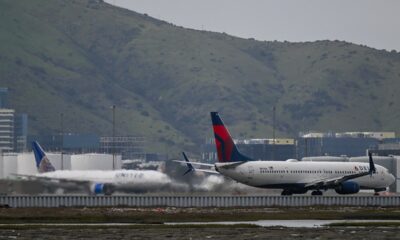The cost estimate for the Cooper Landing bypass project, which would create a new route for the Sterling Highway north around the Kenai Peninsula community of Cooper Landing, is now more than double the original estimate.
When the project began in 2018, the Alaska Department of Transportation and Public Facilities estimated the total cost at about $350 million. Five years later, a 2023 estimate updates that figure to $840 million.
While there’s funding for some parts of the project, the state is now looking for additional money to help cover that difference. Transportation department spokeswoman Shannon McCarthy said that’s likely to be from a federal program called the Mega Grant. Part of the federal infrastructure bill signed into law in 2021, the program is designed for large, complex projects that are difficult to find other funding for.
Officially known as the Sterling Highway Milepost 45-60 Project, the construction would add a new branch of the road that diverges around Milepost 45, or just east of Cooper Landing. The new road would head up into the hills north of the community, cross a gorge over Juneau Creek, and rejoin the existing highway around Milepost 60. The goal is to divert more traffic away from the town of Cooper Landing, where the existing highway is winding, low-speed and close to the Kenai River.
The Cooper Landing bypass has been under discussion for decades, and construction finally began in 2019 after an enabling land swap allowed the state to select its preferred route.
The project is by far the largest in the state right now, McCarthy said. It’s also complex in part because it has multiple phases, it will include constructing the highest bridge in the state, and involves extensive federal and state environmental permitting.
[Workforce shortages could sabotage Anchorage and Alaska economic opportunities, report says]
“Larger projects are typically complicated because of the environmental (considerations) as well as the cost side,” she said. “That’s why they sometimes lose steam politically, because they are so large (and) complicated and they span many years.”
Asked if the project’s cost could increase more in the future, leading to delays, McCarthy said falling inflation and stabilizing materials supply chains are likely to keep costs from spiking going forward.
The most recent cost estimate was completed by both transportation department and the Federal Highway Administration. When completing the updated estimate in 2022, the project crossed the $500 million threshold — a marker the federal government uses to denote very large projects subject to extra scrutiny, McCarthy said.
The project is 90% covered by federal dollars already, with the state kicking in 10%. In its Statewide Transportation Improvement Plan for 2024-2027, the state has outlined $165 million for the project, focused on constructing the bridge across Juneau Creek. The funding source is identified as the National Highway Performance Program, a federal program for improving or constructing roads on the highway system.
:quality(70)/cloudfront-us-east-1.images.arcpublishing.com/adn/42H5S5T7JFFPPAWUURYDVYCOWM.jpg)
The state plans to spend some of this fall going back into that estimate to see where the biggest price jumps were, and to see if they can “right-size” the project to cut down on some expenses, she said.
“Inflation has been eating away at all our estimates all across the state,” McCarthy said.
The transportation department hasn’t identified the biggest contributors to that cost increase yet, but noted that between 2022 and 2023, the estimated cost increased 18%. In a July 21 announcement, the department said is trying to find other ways to fund the project without having to delay others around the state.
Alicia Amberg, executive director of the Association of General Contractors of Alaska, said in an email that inflation-related cost increases for construction projects across the state are driven by factors across the board: materials, supply chain issues, labor and more.
“The construction industry continues to be in the midst of a period of exceptionally steep and fast-rising costs for a variety of materials, compounded by major supply-chain disruptions and a shortage of available workers — a combination that threatens the financial health of many contractors,” she said. “Unprecedented increases in materials costs, supply-chain disruptions, and an increasingly tight labor market have made life difficult for contractors and project owners alike.”
Construction firms have had to raise pay to attract and retain workers, she said. Some conditions, like materials sourcing, have improved, but the effect on large projects is ongoing. Materials prices do eventually go back down, though, she said.
The transportation department is seeking public feedback on its Statewide Transportation Improvement Program plan, which includes funding for the Cooper Landing bypass bridge project, through Sept. 3.
Elizabeth Earl is a freelance reporter based on the Kenai Peninsula.

:quality(70)/cloudfront-us-east-1.images.arcpublishing.com/adn/ZXKRLKKWUBHUTGMEPEZJJ3PBDE.JPG)




















/cdn.vox-cdn.com/uploads/chorus_asset/file/25822586/STK169_ZUCKERBERG_MAGA_STKS491_CVIRGINIA_A.jpg)

/cdn.vox-cdn.com/uploads/chorus_asset/file/25821992/videoframe_720397.png)




